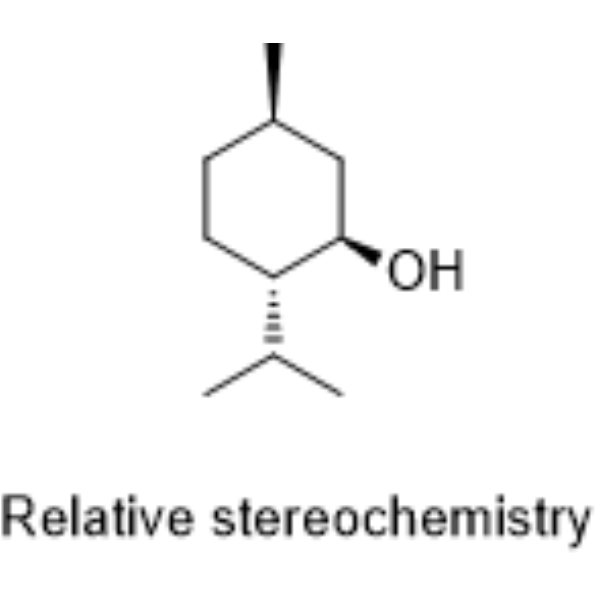
DL-Menthol
CAS No. 15356-70-4
DL-Menthol( —— )
Catalog No. M30865 CAS No. 15356-70-4
DL-Menthol has short term toxicity in rats, it plays a role in the induction of surgical anesthesia in fishes, related at least in part to the activation of GABAA receptors.
Purity : >98% (HPLC)
 COA
COA
 Datasheet
Datasheet
 HNMR
HNMR
 HPLC
HPLC
 MSDS
MSDS
 Handing Instructions
Handing Instructions
| Size | Price / USD | Stock | Quantity |
| 50MG | Get Quote | In Stock |


|
| 100MG | Get Quote | In Stock |


|
Biological Information
-
Product NameDL-Menthol
-
NoteResearch use only, not for human use.
-
Brief DescriptionDL-Menthol has short term toxicity in rats, it plays a role in the induction of surgical anesthesia in fishes, related at least in part to the activation of GABAA receptors.
-
DescriptionDL-Menthol has short term toxicity in rats, it plays a role in the induction of surgical anesthesia in fishes, related at least in part to the activation of GABAA receptors, and of rapid movement possibly via cold nociceptors.
-
In Vitro——
-
In Vivo——
-
Synonyms——
-
PathwayOthers
-
TargetOther Targets
-
RecptorGABAA receptor
-
Research Area——
-
Indication——
Chemical Information
-
CAS Number15356-70-4
-
Formula Weight156.27
-
Molecular FormulaC10H20O
-
Purity>98% (HPLC)
-
SolubilityDMSO, Pyridine, Methanol, Ethanol, etc.
-
SMILES——
-
Chemical Name——
Shipping & Storage Information
-
Storage(-20℃)
-
ShippingWith Ice Pack
-
Stability≥ 2 years
Reference
molnova catalog



related products
-
4A/4B, Peptide (1)
4A/4B, Peptide (1)
-
Br-PEG7-Br
Br-PEG7-Br is a PEG-based PROTAC linker that can be used in the synthesis of PROTACs.
-
Lacutamab
Lacutamab (IPH 4102) is a potent and selective humanized anti-KIR3DL2 antibody.Lacutamab has potential anticancer activity for the study of leukemia and lymphoma.



 Cart
Cart
 sales@molnova.com
sales@molnova.com


